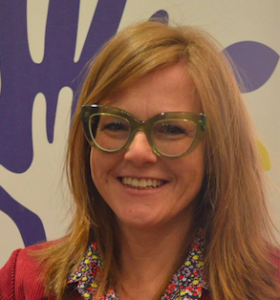
The Common Good: Practicing What You Teach
In teaching undergraduates about social justice, I have found that the concept of the common good is both the most foundational and difficult one for students to learn. According to Catholic social teaching, the perspective from which I teach my theology and justice courses, the concept is defined as such: every individual person should have sufficient access to the resources of the society that they need to completely and easily live fulfilling lives; therefore, the rights of the individual to personal possessions and community resources must be balanced with the needs of the disadvantaged and dispossessed.
My students are able to memorize this definition for exams, but when asked to apply this principle to everyday life and current events, they struggle. I recently discovered, however, that tethering the abstract concept to the concrete circumstances of their lives, as with most things, is the key to their learning.
I made this discovery in mid-March during the abrupt transition of my classes from face-to-face to online format due to the COVID-19 pandemic. With only a few panic-filled days to reformat my classes, I sought help from my “squad”—i.e., my group of justice-seeking colleagues and friends that I trust for advice on how to care for students. Over phone-calls and group social media chat, we shared ideas about how we could ascertain and meet our students’ needs during this unprecedented time. I decided to send out a survey worth enough points to insure that every student would fill it out, quickly. This enabled me to assess whether every student had sufficient access to the resources they needed to live their lives and continue their education.
I was worried about the safety and health of my students—particularly those in possible situations of intimate partner-violence, LGBTQ+ identified students who were returning to live with unsupportive families, international students who could not return home, students who lost their jobs or were now working more now than ever in healthcare, grocery stores, or family businesses, and students who had contracted or been exposed to the coronavirus. Of course, I also needed to know about Wi-Fi and computer access, since without these necessities any online learning would be impossible. I was sure there were also student issues that I had not thought of yet.
So, I created and distributed a simple survey. I asked students about:
- Their concerns about safety, health, Covid-19, and current living conditions
- Wi-Fi availability
- Access to a computer
- Access to course textbooks (since some had not been able to return to campus after Spring Break, before moving home)
- Preferences for online class sessions and office hours to supplement asynchronous lectures and discussion boards--e.g., optional groups hangouts; open office hours? (Accounting for abrupt schedule changes and heeding advice from my “squad,” I made all of my classes asynchronous)
- Concerns they had about online learning and completing coursework
- What support they needed from me
- Other concerns
I told the students that the questions I asked them on the survey were “no-brainers.” I needed this information, first, to connect them to resources for their safety and health, if necessary, and then to re-construct course syllabi that were fair and manageable during this time of upheaval and crisis. I told them that these are the questions that the principle of the common good asks and that the responses the questions generate often demands a restructuring of the community. They got it, because it related to their lives directly.
I also discovered two things: I should be explicitly asking every semester, even outsides of crisis, about student needs and access to resources. Responsible pedagogy demands upholding the common good principle. And effective teaching about this foundational social justice principle requires the instructor to model it by applying it to students’ immediate situations and experiences. This application, in my experience, proved to be the bridge necessary for students to transverse the gap between memorizing a definition to rooting it in their lives with meaning.
As I write this blog, the recent murders of African Americans Ahmaud Arbery, Breonna Taylor, and George Floyd, and the ensuing outrage and protests over their murders, demand me again to consider the common good outside and inside of the classroom. The fact that black lives do not yet matter in our country and world is a clear illustration of the common good failing to be met in our nation. I should be teaching content like this in my classes, while at the same time being cognizant in my pedagogical practice of the heightened needs of my students, particularly those of color.
If you are teaching this summer, how have you restructured your content and pedagogy to account for how the basic needs of your students have changed, due to the global Covid-19 pandemic and the continued outright disregard for black and brown lives?
Leave a Reply